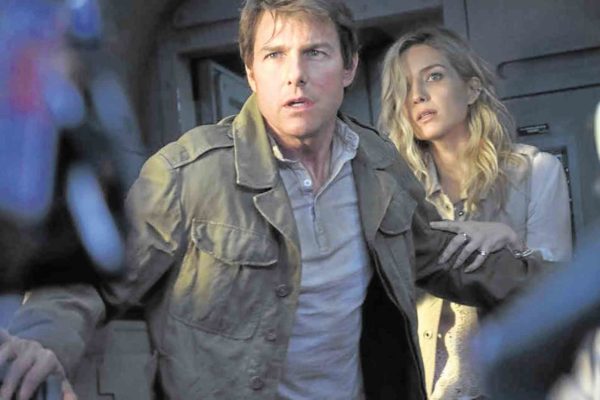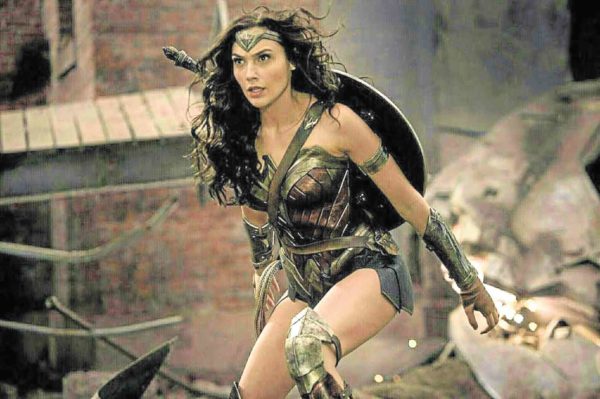What Tom’s spooky thriller can learn from Gal’s ‘Wonder’ film

“The Mummy” costars Tom Cruise and Annabelle Wallis
He may be getting a little long in the tooth portraying a charming but narcissistic twerp in Alex Kurtzman’s “The Mummy,” but Tom Cruise, at 54, isn’t so bad channeling his inner Indiana Jones as an antique-smuggling opportunist who inadvertently awakens a malevolent entity—a “mummified” Egyptian princess who has been “sleeping” in a buried sarcophagus in Northern Iraq for 5,000 years!
With his wisecracking loyal alalay (sidekick) (Jake Johnson) conveniently in tow, looter-adventurer Nick Morton (Cruise) bites off more than he can chew when he mistakenly unleashes the diabolical wrath of Princess Ahmanet (Sofia Boutella), who needs to “consummate” her deal with the devil using Nick as her wrinkly “vessel.”
Cruise is lithe and limber, especially in action sequences that require the actor to rescue Annabelle Wallis (as pert and pretty archaeologist-in-distress Jenny Halsey), or go mano-a-mano against Ahmanet, her pesky but “undead” underlings, and Russell Crowe (named Dr. Henry Jekyll—get it?), who can be creepy just by being himself.
Kurtzman’s actioner has its crowd-pleasing moments, but it’s hard to look beyond its derivative elements, which recall the feisty energy of Brendan Fraser’s smarmy potboilers in 1999, 2001 and 2008.
“The Mummy” comes with cautionary reminders for film aficionados: Tom may have lost some of his stellar golden-boy sheen, but you can’t put the action hero out to pasture just yet. Even more pertinently, beware of double-crossing a woman who knows her rightful place in the sun. As they say: Hell hath no fury like a woman scorned.
Article continues after this advertisementHaving said that, “The Mummy” could learn a thing or three about reintroducing old themes and cruddy ideas from the glorious Gal Gadot who, in collaboration with the similarly charismatic Chris Pine and director Patty Jenkins, cleverly turns the superhero-film genre on its head, by way of the novel retelling of Wonder Woman’s origins—not that there aren’t clarificatory questions about the film that need to be addressed.
Article continues after this advertisement
“Wonder Woman” star Gal Gadot
To be honest, we have grown tired of watching superhero films in the past year or so, because of their nausea-inducing contrivances and predictability—but, “Wonder Woman,” like “Logan,” proves that there are inventive ways of reinvigorating oft-repeated tales and comic-book stories without compromising their inherent “likability” and kwela-sa-masa appeal.
Diana Prince, the unassuming demigoddess and princess of Themyscira (aka Wonder Woman), affirms what we’ve known all along—that women aren’t a weaker gender, and fighting for what’s good and right isn’t a sign of weakness.
In Diana’s world, a woman’s strength isn’t synonymous with brute force or a butch-like countenance.
Like Lynda Carter before her, Gadot portrays the lovely Justice League insider as a veritable game-changer who refuses to acquiesce to the whims of a world that knows no better than to wage war against itself.
Wonder Woman is as vulnerable and curious as she is indestructible, but her moral conviction is unwavering and resolute—which adds to her “relatability” and allure.
And no, we aren’t just talking about snazzy special effects and flashy, multidimensional collaborations with other superheroes. Except for a quick mention of Bruce Wayne, the movie doesn’t include crowd-drawing epilogues or cameos that feature Diana’s colleagues in the crime-busting business.
All the movie has is a cleverly realized and masterfully staged story that viewers can empathize with—and fine actors who know how to “tell” it well.